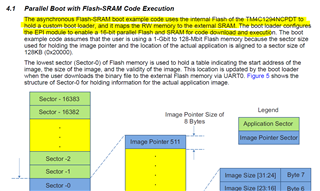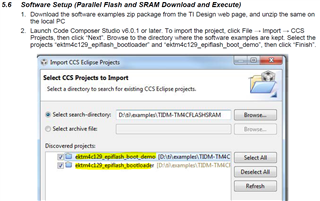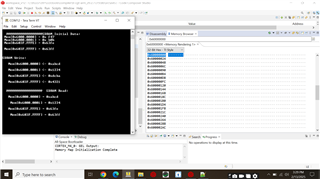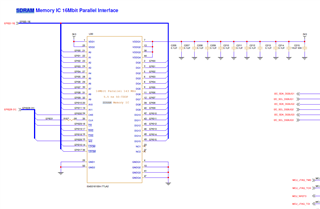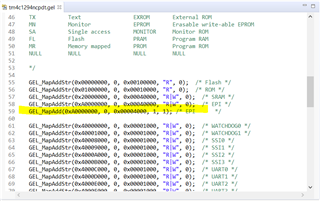Tool/software:
I Have requirement to load the hex file into RAM for firmware upgrade and boot from RAM , can you please help me to do the changes in Linker file to
use the RAM for both vtable section for Bootloader Application and to write the hex file for Firmware upgrade HEX file and boot from there
When I try to write in RAM section beyond the memory region allocated for execution Its is writing only "0" zeros.
Can you Please suggest how to partition the RAM for Application Vtable section and to write firmware upgrade Hex file via Ethernet.
can you also please review the linker file for any changes to be made
/******************************************************************************
* Copyright (c) 2013-2017 Texas Instruments Incorporated. All rights reserved.
* Software License Agreement
*
* Texas Instruments (TI) is supplying this software for use solely and
* exclusively on TI's microcontroller products. The software is owned by
* TI and/or its suppliers, and is protected under applicable copyright
* laws. You may not combine this software with "viral" open-source
* software in order to form a larger program.
*
* THIS SOFTWARE IS PROVIDED "AS IS" AND WITH ALL FAULTS.
* NO WARRANTIES, WHETHER EXPRESS, IMPLIED OR STATUTORY, INCLUDING, BUT
* NOT LIMITED TO, IMPLIED WARRANTIES OF MERCHANTABILITY AND FITNESS FOR
* A PARTICULAR PURPOSE APPLY TO THIS SOFTWARE. TI SHALL NOT, UNDER ANY
* CIRCUMSTANCES, BE LIABLE FOR SPECIAL, INCIDENTAL, OR CONSEQUENTIAL
* DAMAGES, FOR ANY REASON WHATSOEVER.
*
*
*****************************************************************************/
--retain=g_pfnVectors
/* The following command line options are set as part of the CCS project. */
/* If you are building using the command line, or for some reason want to */
/* define them here, you can uncomment and modify these lines as needed. */
/* If you are using CCS for building, it is probably better to make any such */
/* modifications in your CCS project and leave this file alone. */
/* */
/* --heap_size=0 */
/* --stack_size=256 */
/* --library=rtsv7M3_T_le_eabi.lib */
/* The starting address of the application. Normally the interrupt vectors */
/* must be located at the beginning of the application. */
#define APP_BASE 0x00000000
#define RAM_BASE 0x20000000
#define RAM_BASE_DATA 0x20007000
#define EX_RAM_BASE 0x60000000
#define APP_LENGTH 0x00016000
/* System memory map */
MEMORY
{
/* Application stored in and executes from internal flash */
FLASH (RX) : origin = APP_BASE, length = APP_LENGTH
/* Application uses internal RAM for data */
SRAM (RWX) : origin = RAM_BASE, length = 0x00060000
EXSRAM (RWX) : origin = EX_RAM_BASE, length = 0x00040000
}
/* Section allocation in memory */
SECTIONS
{
.intvecs: > APP_BASE
.text : > FLASH
.const : > FLASH
.cinit : > FLASH
.pinit : > FLASH
.init_array : > FLASH
.vtable : > RAM_BASE
.data : > SRAM
.bss : > SRAM
.sysmem : > SRAM
.stack : > SRAM
.vtable : > EX_RAM_BASE
.data : > EXSRAM
.bss : > EXSRAM
.sysmem : > EXSRAM
.stack : > EXSRAM
#ifdef __TI_COMPILER_VERSION__
#if __TI_COMPILER_VERSION__ >= 15009000
.TI.ramfunc : {} load=FLASH, run=SRAM, table(BINIT)
.TI.ramfunc : {} load=FLASH, run=EXSRAM, table(BINIT)
#endif
#endif
}


